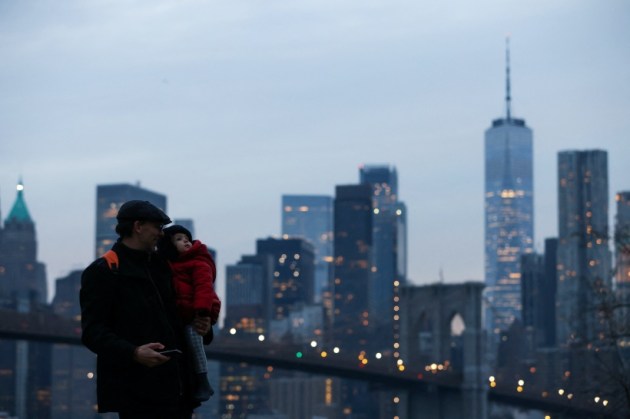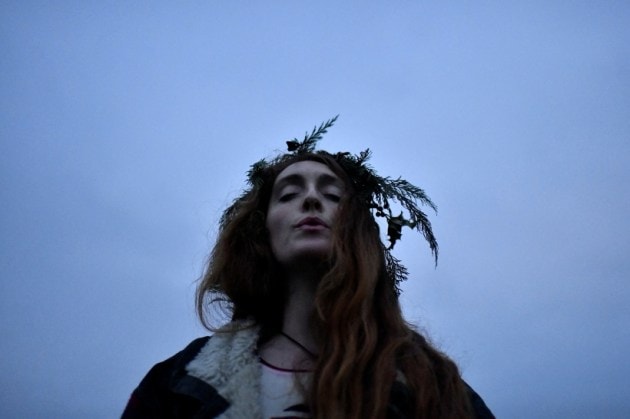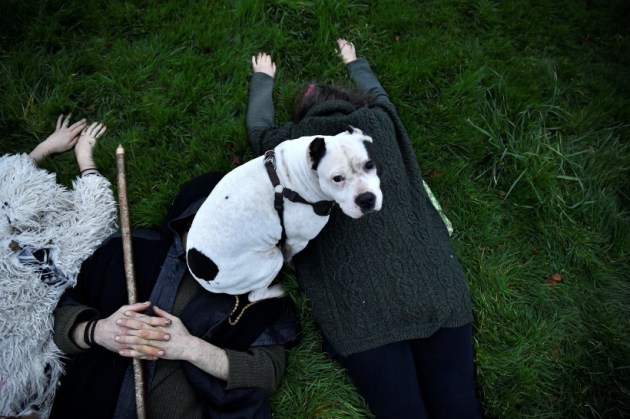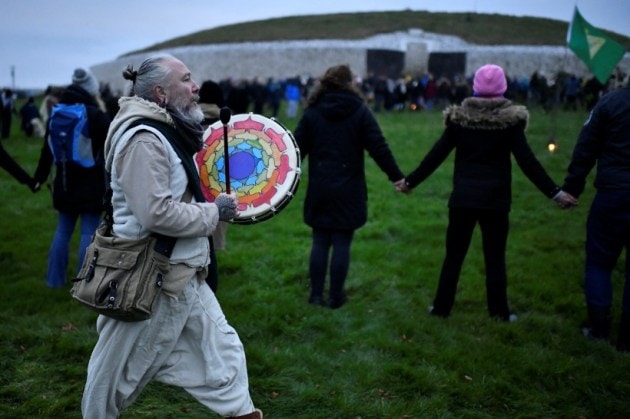In pictures: How revelers marked winter solstice 2021
Winter solstice is also known as ‘hiemal solstice’, ‘hibernal solstice’, ‘brumal solstice’.
December 22, 2021 17:44 IST 1 / 10
1 / 10Every year, on December 21, Earth experiences winter solstice, a phenomenon wherein one of its pole tilts is farthest from the sun, causing the day to become the shortest of the year and the night to become the longest.
A person captures the Manhattan skyline on the Winter Solstice in Brooklyn, New York City, U.S. (Source: Andrew Kelly/REUTERS) 2 / 10
2 / 10Cedric Vareil of France stands in front of the Manhattan skyline with his daughter on the Winter Solstice in Brooklyn, New York City, U.S. (Source: Andrew Kelly/REUTERS)
 3 / 10
3 / 10Reveller enjoys sunrise during winter solstice at the 5000-year-old stone age passage tomb of Newgrange in the Boyne Valley, Newgrange, Ireland. (Source: Clodagh Kilcoyne/REUTERS)
 4 / 10
4 / 10Dog sits on its owner's face as revellers welcome winter solstice at the 5000-year-old stone age passage tomb of Newgrange in the Boyne Valley, Newgrange, Ireland. (Source: Clodagh Kilcoyne/REUTERS)
 5 / 10
5 / 10Interestingly, this happens twice every year, once in the northern hemisphere and once in the southern hemisphere.(Source: Clodagh Kilcoyne/REUTERS)
 6 / 10
6 / 10the opposite of this occurrence is the summer solstice when one of the poles tilts is towards the sun, causing the longest daylight and shortest night. (Source: Clodagh Kilcoyne/REUTERS)
 7 / 10
7 / 10The tilting towards and away from the sun is the reason why countries situated around the poles — north and south — experience opposite weather conditions in different times of the year. (Source: Clodagh Kilcoyne/REUTERS)
 8 / 10
8 / 10Worker at a restaurant famous for dumplings during winter solstice day in Beijing, China. (Source: Ng Han Guan/AP Photo)
 9 / 10
9 / 10Customer leaves from a restaurant popular for its dumplings during winter solstice day in Beijing, China. (Source: Ng Han Guan/AP Photo)
 10 / 10
10 / 10People hold candles and gather around fire during a winter solstice celebration in North Andover, Massachusetts, U.S.(Source: Reba Saldanha/REUTERS)











